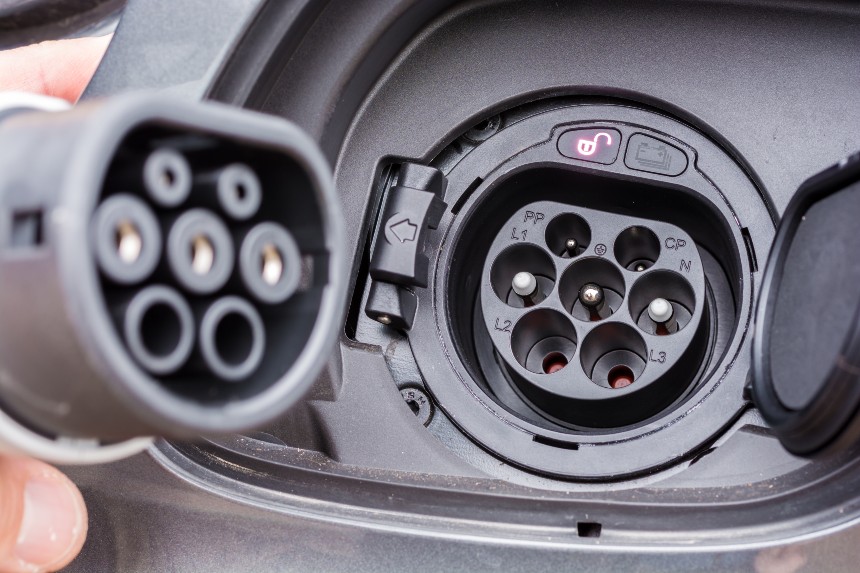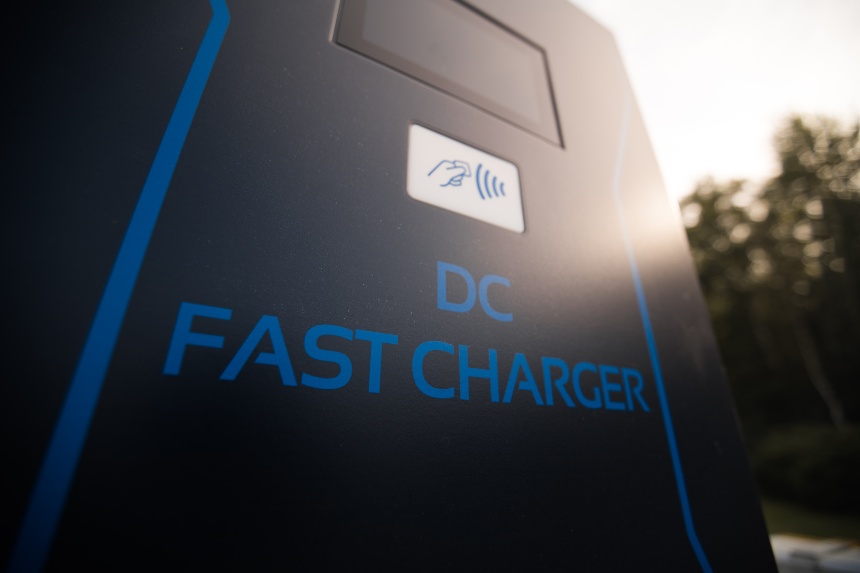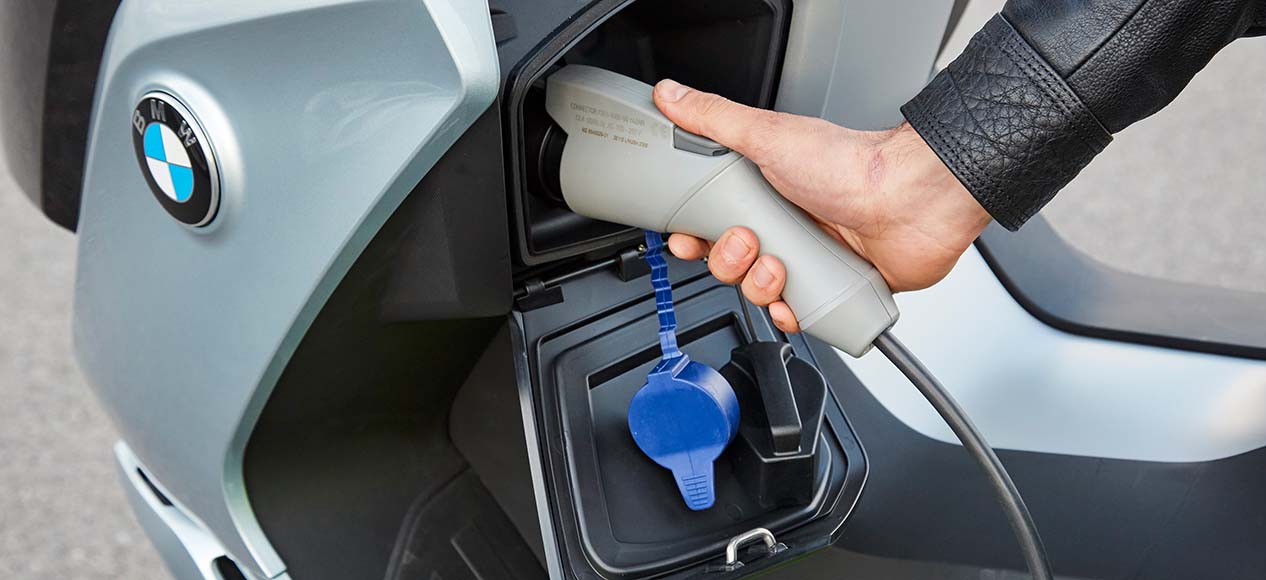Earlier this month the Motorcycle Industry Association (MCIA) announced that the Department for Transport’s Office for Low Emissions Vehicles (OLEV) is extending its electric vehicle home charge scheme, as well as a similar scheme for workplaces, to owners of larger electric motorcycles. The scheme gives a grant of £350 to go towards a charging socket for their bikes at home or in the workplace.
The scheme, which was previously only open to drivers of electric cars and vans, goes alongside a grant of up to £1500 towards the purchase price of electric motorcycles from brands like Harley-Davidson, Energica and Zero, and means that a charging point will typically cost in the region of £450 after the government’s contribution.
Types of charging points for electric motorbikes
Typically electric motorcycle owners have been slow to fit charging points for their vehicles. The main reason is that most choose simply to charge through a domestic three-pin wall socket, although increasingly electric motorbikes have come equipped to be hooked up to public charging posts, rapid chargers and domestic type two points like the ones covered by the grant. The main types of socket used are:
Domestic (three pin) socket
The choice of most owners is a regular home socket. The limitation of a domestic socket is that they are typically rated at 3kw, which in real terms means that electricity will be charged into your battery at around 2.3kw. With a typical electric motorcycle battery storing in the region of 12.5kwh (kilowatt hours) of energy, that means that to charge a bike from zero to full, will take in the region of five hours. With many riders parking up and charging in their garage overnight, or at the office during the day, this is a cheap and convenient way to recharge.
Type Two/Mennekes

Type two connections are the most common connectors for electric vehicles. They are the industry standard for cars and are the ones you’d usually find in supermarket car parks and the likes.
‘Type Two’ refers to the connector itself, which is circular and flattened at the top. They are often referred to as a ‘Mennekes’ connector, especially in mainland Europe, after the company that invented it. Although they can come in various ratings, the maximum speed from a single phase electricity supply is 7.2kw, meaning that recharging the 12.5kw battery like the above example will be around three times faster, assuming that the bike’s onboard charger is capable of charging at that rate.
Three phase electric charging points can also be found. These are typically too expensive to install in the home or workplace, however these can push charging rates up to 43kw through a tethered type two connector.
CCS DC Fast Charging

DC (direct current) offers faster charging than AC (alternating current) but chargers are large units usually found in motorway service areas. Currently only Energica and Harley-Davidson offer CCS charging on their electric motorcycles, with claims of being able to recharge the battery to 80% in 40 minutes.
DC charging points are relatively rare. They are typically more expensive to install and use and, because they flow a lot of power into your battery, it’s usually best not to use them unless really necessary, as that rapid charging may reduce the battery’s longer-term efficiency. One of the key differences between AC and DC charging is that AC charging is ‘on board’ and DC is ‘off board’. In other words, with AC charging the power goes through an onboard battery charger, which converts the AC power from the source into the DC power needed by the battery, while a DC charging point is essentially the battery charger and supplies energy directly to the battery.
How much does it cost to charge an electric motorcycle?
That depends. Generally you are paying for electricity by the unit, or kilowatt hour to use the official term. Charging at home, you’ll typically pay between 14p to 18p per unit. As an example, the battery on a Zero SR/F holds around 12.5kwh of energy and will provide around 100 miles of range at a cost of less than £2.00.
Charging at public points vary. Some are completely free, while others have a monthly subscription of around £10 but are free to use. Some others may have a connection charge of around £1, with an additional cost for the electricity in line with standard rates. Rapid chargers, especially those found on motorways, are generally more expensive and cost between 30-40p per unit, although they don’t usually have a connection charge.
Many public charging points require an account to be set up, which are operated using an app or RFID card, although increasingly operators are equipping their charge points with contactless payment facilities, for true ‘pay as you go’ capability.
Where can I find a public charging point?
A common criticism of electric vehicles (EVs) is that the charging infrastructure is not yet mature, and while there is some validity to that (some areas are better served than others) there are actually more EV charging points than petrol stations in the UK.
Posts are less conspicuous than petrol stations but using the Zap Map app you’ll be able to find your nearest one easily.
Typically single phase type two chargers can be readily found in town centres and supermarket car parks, while faster DC chargers are found in motorway and trunk road service stations, where motorists need to charge rapidly.
How do I charge an electric motorbike?
Most electric motorcycles and scooters can be charged using a domestic socket and will require a cable to connect the bike to a regular three pin socket.
Some smaller bikes, and older generation Zeros, often use a standard kettle lead, the kind of cable you use to plug into your computer, but higher end machines like the Energicas, Harley LiveWire and Zero SR/S use a thicker cable with a type two connection to go into the bike. Some of these will have a three pin plug at one end (known as a ‘Granny Charger’ in EV circles) or a type two connector to allow connection to a EV charging point for faster charging.
When using a DC rapid charger, the cable tethered to the charger itself should be used.
Some lightweight machines, like the popular Super Socos, have batteries which can be slotted in and out, allowing them to be taken indoors and charged up, or swapped for a fully charged one – but this is not really possible with larger bikes, where batteries can weigh as much as 100kg.
What’s the range of an electric motorcycle?
One of the most common questions asked about electric motorcycles is how far they can go between recharges.
Range varies on a number of factors, not least the size of the battery, weight, aerodynamics, weather conditions, speed and riding style.
Zero, Energica and Harley-Davidson typically use batteries rated between 13kwh and 15.5kwh. This size provides a balance between costs, weight and range. A Zero, with the 14.4kwh battery, typically has a range of around 100 miles in normal riding, but this can go down to around 70 miles at motorway speeds and around 160 miles around town.
Bikes with more weight to carry around, cold weather or poor aerodynamics, will generally return poorer range figures, while good aerodynamics, lighter weight, still weather conditions and smooth riders can improve range figures.
What electric motorcycles and scooters are available?
Despite being a relatively rare sight on the road, there are a number of electric motorcycles and scooters available. Here are five of the most well known:
BMW
BMW is one of the main players in the electric car world and the C Evolution is one of the longest established electric PTWs (powered two-wheeler) manufacturers too.
The C Evolution was first seen in 2014 and can be ridden on a provisional licence, for riders who have completed the CBT and are displaying L plates. It has evolved with a new ‘long range’ version with a 100 mile range, using a battery from the i3 car.
At 265kg it is a heavy machine, however it is well built and an increasingly common sight as an urban police patrol bike.
Energica
Although they don’t sell many bikes, Italian company Energica are well-known as the first manufacturer of electric superbikes, and as the supplier to the new MotoE racing series.
Starting with the Ego sportsbike in 2015, the range has received annual updates to increase range and diversify the range, including the unfaired Eva.
These days the Ego has a 150mph top speed and the option of a 21.5kw battery – the biggest on the market today – although they are not cheap and can weigh as much as 280kg.
Harley-Davidson
Harley’s heavily publicised LiveWire project finally went on sale at the end of 2019.
The LiveWire is significant for being the first electric motorcycle from a mainstream, legacy manufacturer. It’s a good machine too, with loads of torque (as you would expect from an electric motor) and the onboard DC charging means that it can be juiced up quickly when out on runs.
Super Soco
At the other end of the scale is China’s Super Soco, who have had great success with its range of small machines.
Starting out with a range of motorcycles equivalent to a petrol powered moped, Super Soco has recently introduced a series of bikes and scooters more akin to a 125cc level of performance.
With 60 miles around town they are ideal commuters. The Socos can all be ridden by young riders on L plates and with prices starting at just over £2000 they’re the cheapest electrics on the market. The small batteries restrict range but can be taken out to be charged indoors, or swapped over for fully charged up spares.
Zero
American company Zero Motorcycles is widely regarded as the market leader in the sale of electric motorbikes.
The California-based factory has been in business since 2006 and only makes electric machines. They’re currently the biggest seller of full-sized electric motorcycles and have a wide range of models, from supermotos to adventure bikes and naked sports machines.
Unlike some of the other electric bikes on the market, which are often expensive and futuristic concepts, Zeros tend to be lighter and cheaper than other electrics on the market (coming in at less than £10,000 and 145kg) making them more usable as day-to-day commuters than the more exotic rivals.



